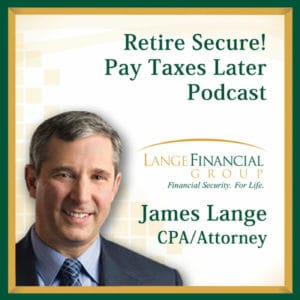Click here to listen to this snippet.
Erika: This first question comes from Florina and it was submitted before the webinar. Florina is asking this question from New York, NY. And she’s saying ‘Can you give the pros and cons of reinvesting dividends versus from getting cash in either A: a retirement account or B: a taxable account?
Larry Swedroe: Yeah, so what I generally recommend is that people do not reinvest dividends and take the cash so they can use it to rebalance their portfolio. That means they generally have to do one transaction they’re buying only one fund instead of rebalancing you have to buy and sell to do that. Number two you avoid selling or minimize the risk in having to sell something to rebalance and then having to pay a capital gains tax if it was in a taxable account. Unless you’re talking about getting very small amounts of dividends it really won’t matter and you don’t want to pay a $10 or $20 transaction fee because it’s too large a percentage. I generally recommend you take the cash and use it to reinvest. Adam, do you want to add to that?
Adam Yofan: I think it’s also important to note that when you get a dividend if you look at it, the stock price falls by the same amount. So certain people who are predisposed to buying dividends and paying stocks for anything else aren’t getting extra juice. Right? If you think about it you’re getting even less because you have to pay tax on that dividend. So remember; it’s not what you make it’s what you keep.
Jim Lange: I have nothing to add. I think they’re both good points. I think a lot of people don’t think of these. I have a lot of people who say ‘Well gee I just want to reinvest. I want to keep it simple.’ Or ‘I want to buy stocks that have high dividends.’ And they think they’re doing better than perhaps a growth stock or a value stock. But I think it’s good to hear both Adam and Larry say something that probably isn’t what you might have had in mind. So great job on that answer both of you guys.
Larry: We can add one other part to that answer since Adam did touch on that is something that I’ve written on in many of my books. We don’t avoid dividend-paying stocks, but we don’t want to have a preference for them. Dividend-paying stocks have no higher returns than non-dividend-paying stocks and you lose diversification because only about a third of all stocks pay dividends so you’re missing out on two-thirds of the market, so that’s another important thing. And the worse thing, and one of the biggest most persistent mistakes that investors make, is in periods of low interest rates where you can’t meet your goals leaving your money in safe bonds or CDs because they’re yielding zero or 1% or so, then people tend to buy higher-yielding things like dividend-paying stocks. Then if the risk shows up not only do their stocks crash 30, 40, 50% like during the COVID crisis or in the 2008 great financial crisis but things like dividend-paying stocks, reeds, MLPs, high yielding junk bonds, whatever other types of cash-generating assets they all crash at the same time and that can push your portfolio into a position where you can’t recover from OR you may panic and sell. Psychologists have written about why there is this preference and it’s purely a psychological one. There is no academic or logical economic reason to prefer dividend-paying stocks. In fact, there are some reasons to make sure you don’t have a preference for them.
Join Jim Lange LIVE on September 28th and 29th for his FREE two-day virtual events!
Click here to reserve your seat!

